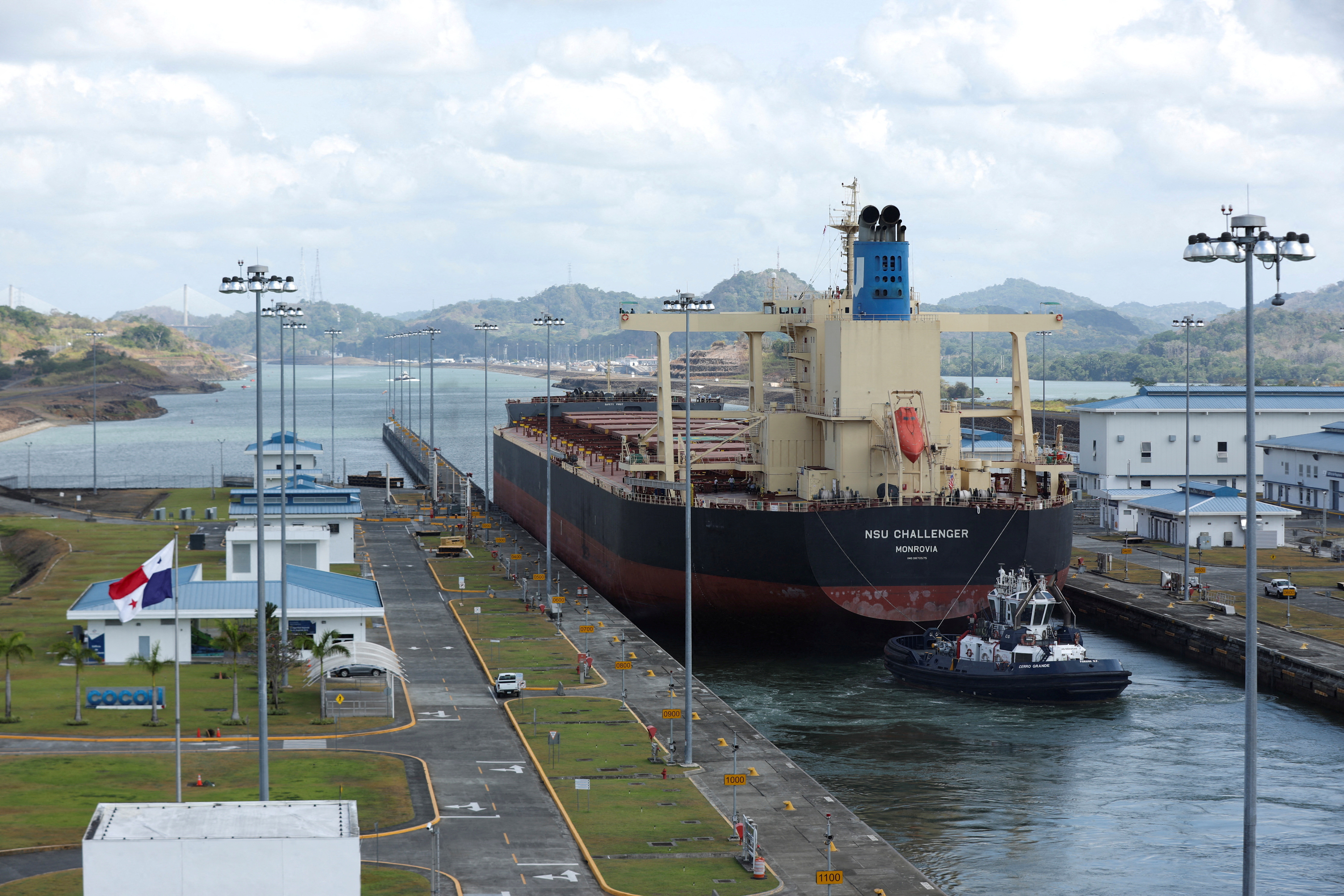
The bulk carrier NSU CHALLENGER Monrovia transits the expanded canal through the Cocoli Locks of the Panama Canal, on the outskirts of Panama City, Panama on April 19, 2023. REUTERS/Aries Martinez Obtaining licensing rights
PANAMA CITY (Reuters) – The Panama Canal could lead to a reduction in the maximum daily ship crossings allowed if the drought persists this year, its director said on Tuesday.
Large numbers of ships are waiting to pass through the transoceanic canal, which handles an estimated 5% of global trade. It began restricting vessel drafts and daily passes this year to conserve water.
Many ships were forced to lighten their loads before passing, and shipping costs rose ahead of the Christmas shopping season.
Up to 32 ships are currently allowed to transit daily, down from 36 ships under normal circumstances. The ship’s maximum draft was set at 44 feet, up from 50 feet.
To ease the bottleneck, the canal recently changed its reservation system to allow more unreserved ships to pass and to give priority to ships waiting longer.
As of Tuesday, 116 ships were waiting to pass through Panama, down from more than 160 ships in early August. The maximum waiting time was 14 days, down from 21 days a month ago, according to official data.
The head of the Panama Canal Authority, Ricorte Vasquez, said that the waterway will choose to reduce daily crossings if necessary, before planning any additional reduction in the draft of authorized ships, which affects shipping companies the most.
No traffic restrictions are planned for this month. But he added that in its budget for the fiscal year that begins in October, the canal expects a possible reduction in the number of 30 to 31 daily crossings.
The El Niño weather phenomenon “was very intense this year. We have high temperatures in the Pacific Ocean and the Atlantic Ocean simultaneously,” Vasquez told reporters at a press conference. “We expect that in the coming months, in the absence of heavy rains, we will have to be prepared.”
Prolonged dehydration
Water levels in Lake Gatun, which feeds the waterway, reached 24.2 meters (79.7 feet) last week, down from 26.6 meters in September in recent years.
Vazquez added that if the drought persists for more than 12 months, the canal may have to change its weather models, which could lead to additional restrictions.
He added: “We do not believe that the channel will stop working.”
Panama must eventually modify the way water flows into Lake Gatun to secure enough water for the canal, which uses 50 million gallons (190 million liters) of fresh water for each ship that passes through it.
“We are working eagerly with the authorities to reach an arrangement that will lead to the construction of additional tanks,” Vasquez said. The proposed project, which would require a change in legislation and must be submitted to Congress, could be open for bidding next year.
Experts have warned of disruptions to maritime trade ahead of what looks to be a drier period next year. They say a potential early start to Panama’s dry season and above-average temperatures could increase evaporation and lead to near-record low water levels by April.
(Reporting by Mariana Parraja; Editing by Gary McWilliams, Timothy Gardner and David Gregorio)
Our standards: Thomson Reuters Trust Principles.

“Lifelong food lover. Avid beeraholic. Zombie fanatic. Passionate travel practitioner.”
